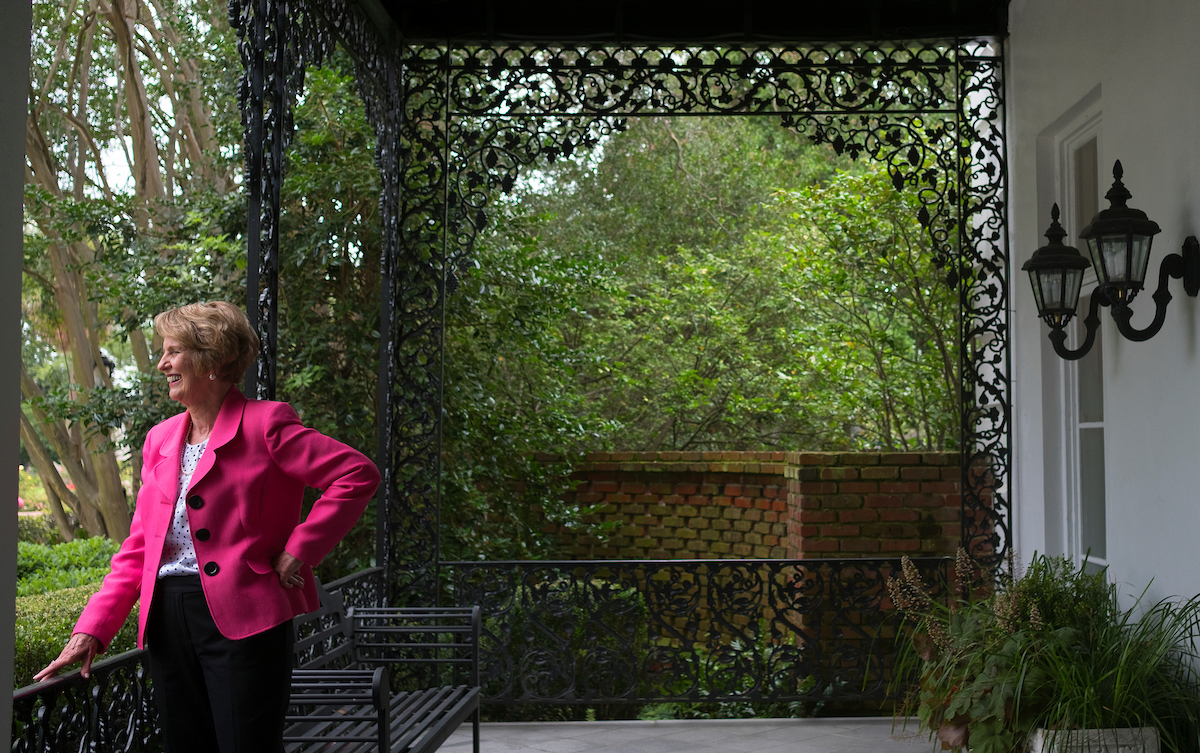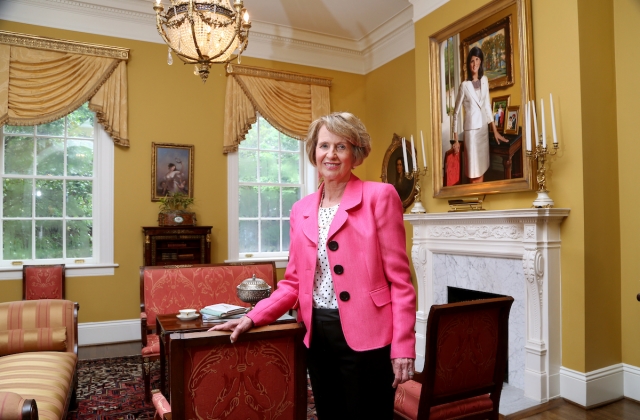Mary Ross: The Job of a Lifetime
Volunteering leads to decades of service alongside S.C. governors, their families
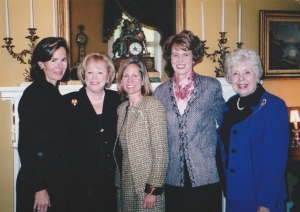
With a Southern accent worthy of Margaret Mitchell’s Scarlett O’Hara, coupled with a timeless elegance always just beyond Miss O’Hara’s grasp, Mary Ross, WC ’58, worked alongside six governors and their families for three and a half decades at the South Carolina Governor’s Mansion. The Columbia, South Carolina, native says those were among the best years of her life, mostly because she never considered what she did as work.
“I wasn’t even thinking about working when they asked me to be a volunteer at the mansion,” she recalls.
“They” were James B. and Ann Darlington Edwards. The state’s first Republican governor since reconstruction, James Edwards served from 1975-79. “They were my first,” Ross says. “I accepted, and it went from there.”
“I would help Ann do things for the mansion,” Ross says. “We would buy linens and go get linens, though we didn’t actually have to buy them at that time, because the textile industry gave them to us. And we would travel here and there on the plane in order to purchase items for the mansion. It was a wonderful time. Ann and I remain close friends today.”
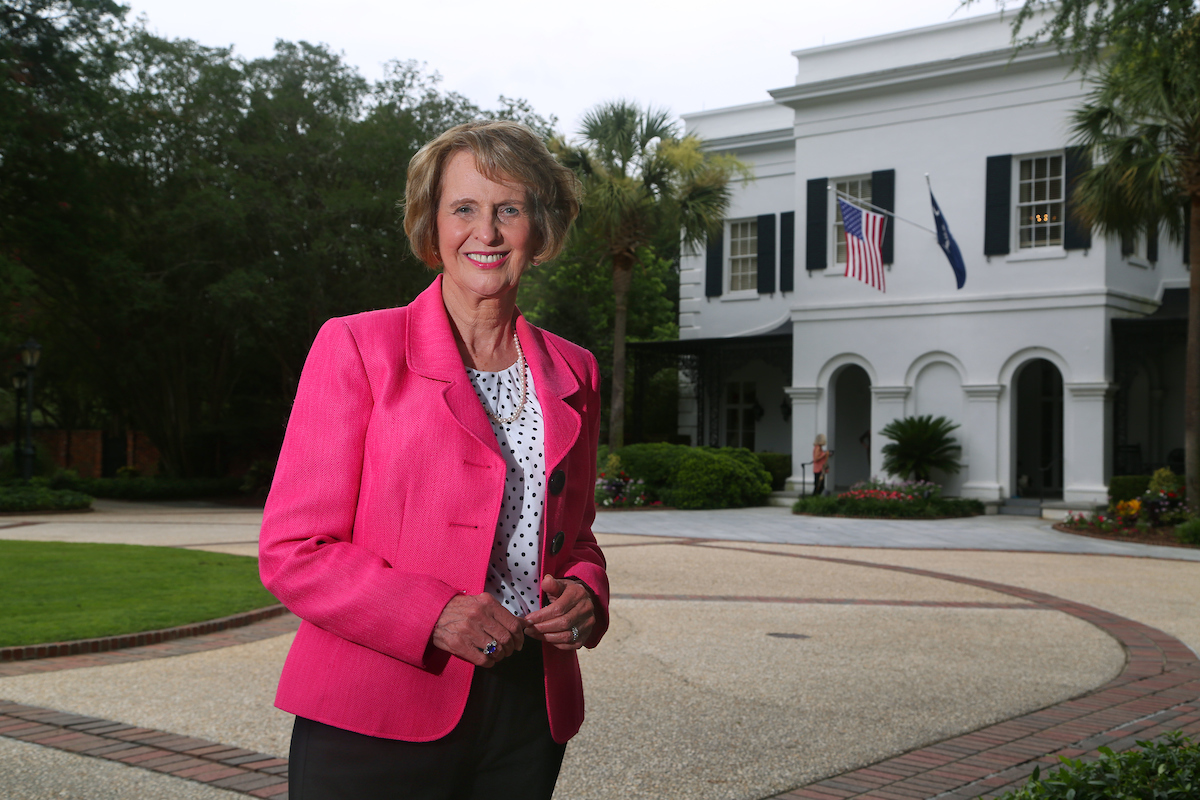
Built in 1855, the mansion originally served as faculty quarters for the Arsenal Academy, which, together with the Citadel Academy in Charleston, formed the South Carolina Military Academy, now known as The Citadel. The Arsenal was burned along with the city of Columbia a decade later by Gen. William Tecumseh Sherman’s Union forces. The structure was the only surviving building and became the state’s executive mansion in 1868, housing more than 30 governors and their families since.
A 2001 renovation added 5,000 square feet. First-floor tours include the state dining room, two drawing rooms, the library and the smaller palmetto dining room all furnished with period antiques. The grounds of the mansion encompass nine acres of land in Columbia’s historic district plus two other houses, the Lace House and the Caldwell-Boylston House.
Can-do attitude
Richard “Dick” and Ann “Tunky” Riley followed the Edwardses. Riley was the first state governor to serve two consecutive terms, from 1979-87, and the last Democratic governor to do so. During their early days in the mansion, the Rileys decided a gift shop was needed for the growing tourist traffic. They asked Ross if she would help start the shop.
“When you work for people like these, it didn’t matter if you were Republican or Democrat. You were whatever they are at the moment, because it’s important to have that great working relationship.”
Mary Ross, WC ’58
“I remember then being thankful for my Brenau experiences,” she says. “One of the best qualities Brenau instilled in us as students was that we could do anything if we put our minds to it, so I agreed.”
Tunky and Ross became fast friends, not the least of the reasons being that they were both members of Delta Delta Delta sorority. “It’s amazing how those connections forged earlier in life can serve you all through life,” Ross says.
The duo soon realized that starting the new enterprise was beyond a reasonable expectation for a volunteer position, with the stocking of the shop and the managing of the staff. Ross was officially hired to manage the shop and the docents who conducted tours of the mansion, as well as help buy merchandise for the gift shop at the statehouse.
It was decided that as a full-time employee, she had to be assigned to some entity, as institutions are apt to require. It was decided she would become an employee of the state’s Park, Recreation and Tourism Division as a manager and buyer, “but I was really at the Governor’s Mansion,” she says with her strong, independent streak.
While the mansion is the symbolic “people’s house” of the state, it is also the home of the first families, and Ross learned early the importance of being discreet when working so close with them. “It was always politics, but we never saw it, and it didn’t really matter,” she says. “When you work for people like these, it didn’t matter if you were Republican or Democrat. You were whatever they are at the moment, because it’s important to have that great working relationship. You learn real quick that everything is behind the cloak; you keep everything a secret.”
After the Rileys came Govs. Carroll Campbell Jr. and wife Iris (1987-95), David Beasley and wife Mary Wood (1995-99), Jim Hodges and wife Rachel (1999-2003) and Mark Sanford and wife Jenny (2003-11). Each family brought its own style and habits to the mansion, Ross says, and all were wonderful to be around.
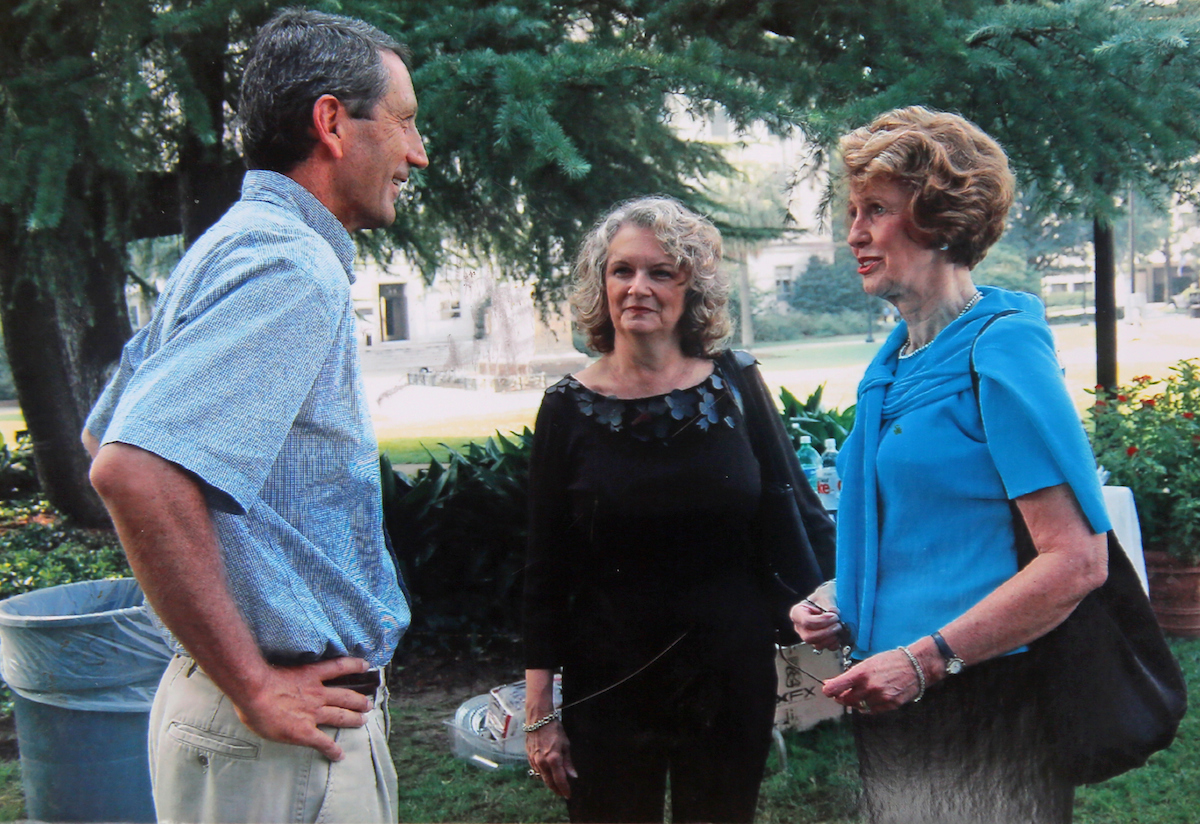
‘Just like it was told to me’
For decades, Ross and a friend who serves as the Governor’s Mansion curator have provided occasional small-group, behind-the-scenes tours while being careful to protect the privacy of the quadrennial residents.
Yet Ross shares that one of her favorite stories happened in the Riley administration when inmates worked at the mansion and one served as the butler. Gov. Riley had a penchant for inviting guests to stay in the mansion, often with no prior notice given to the staff. The lack of notification placed the butler in an occasionally awkward dilemma in assigning bedrooms.
At the time, there were only two guest rooms, one with twin beds and the other sporting a historic smaller campaign bed designed for military officers and dignitaries to use during extended travel that lacked suitable lodging. “One day the butler asked Tunky what he should do when two people show up unannounced and she’s not there; how was he to decide who to put in which room?” Ross recalls. “She told the man that a rule of thumb is that you look at the people, and if they’re a little large, you’re going to want to put them in the twin beds, and if they’re not, put them in the campaign bed.”
The butler said he understood. A few weeks later, the curator was coming down the stairs behind two couples who had recently checked into their rooms when one lady – the heavier of the two – asked the butler how he had decided which room they were assigned.
“The butler, obviously feeling a little perplexed, finally replied, ‘Well, ma’am, I’m gonna tell it to you just like it was told to me,’” Ross retells with a laugh. “The curator scurried back up the stairs and let Tunky know she may want to wait a little while before going down stairs.”
Retirement in 2007 did not end Ross’ connection to the mansion and its first families. “I’ve gone in a complete circle,” she says. “I’m back to no paycheck and just volunteering, helping with occasional functions.” She served in the role of chairman of the docents for a number of years after retiring but gave that up last year because, at 80 years old, she decided, “They needed somebody with a little more oomph.”
Ready for the real world
Ross credits her Brenau professors and sorority experiences for her career preparation. “My professors were always encouraging us to excel academically and socially,” she says. “From them, I learned the importance of helping others while remaining in the background. I had teachers that, if you weren’t living up to your full potential or if you were having problems with something, they were willing to help you, and they would stay behind the scenes. I found that so comforting and reassuring. I just don’t think you’re as likely to find that at a larger university.”
Sorority life taught Ross important leadership and social skills as she took on officer roles and learned to become more outgoing with people through the chapter’s many social events. “In my work, I met every type of person imaginable,” she says. “People would come in for tours or into the gift shop, and I would just treat each of them like they were the Queen of England. Brenau taught me the importance of doing that.”
Ross says volunteering is a great way to find out if you really love doing something. “It’s not easy going into government work,” she says. “I went in a very safe and wonderful way because I was a volunteer. Volunteering led me to the most wonderful job I have ever had, and I would have never known that if I hadn’t volunteered. Every day, it was a joy to get up and go to work. Most people can’t say that.”
She recommends volunteering to anyone who isn’t sure what they want to do, “especially if you’re a young person. Volunteering gives you a great way to test the waters and see if you like it.”
